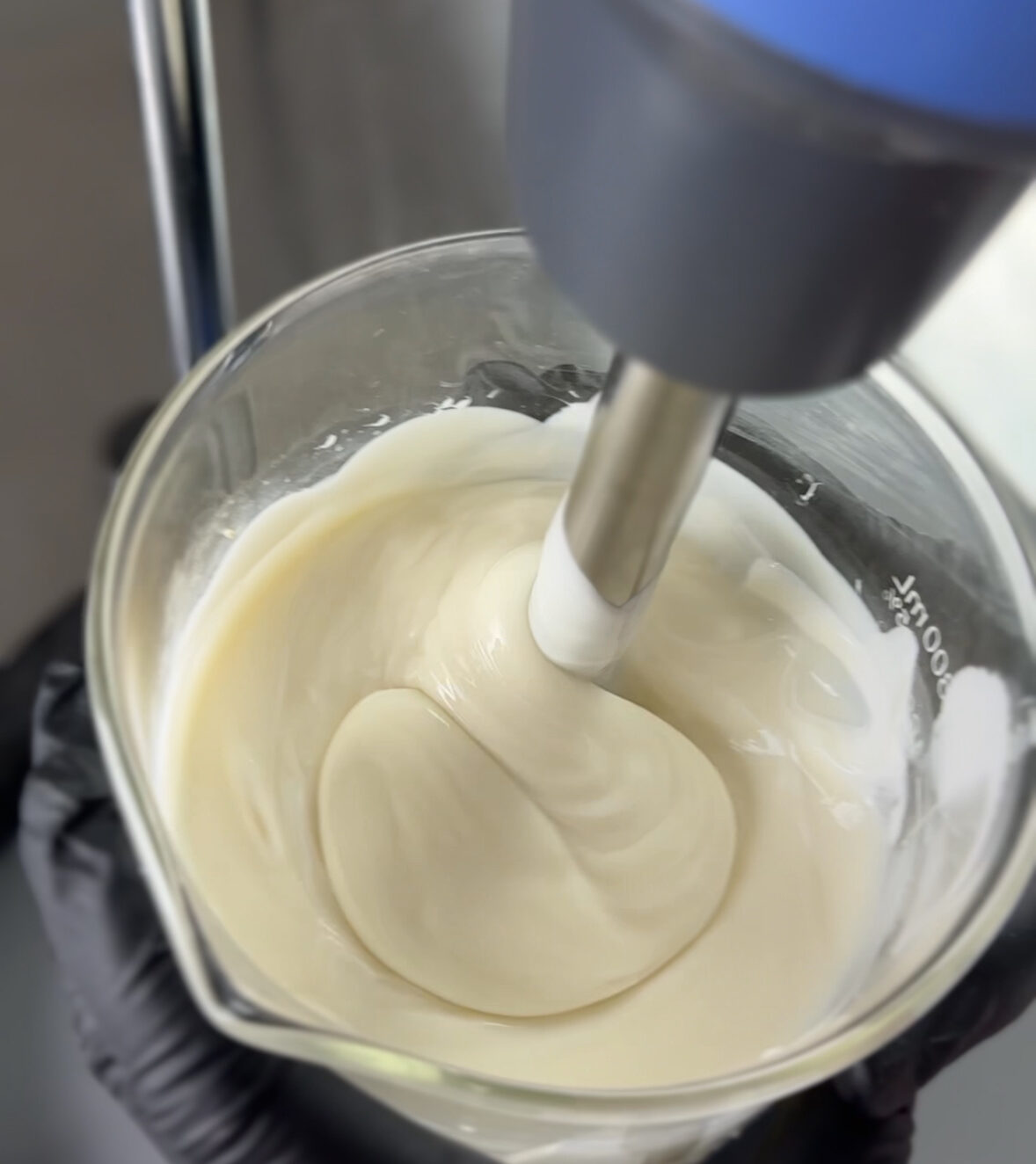
Previously we shared a post on hair conditioner vs hair mask here. There are several areas a formulator needs to consider when formulating a hair conditioner. There are a few generic and important questions to answer. Who is the customer? What type of hair does the customer have? How often does the customer wash their hair? Will the conditioner be paired with a shampoo? Is it a rinse off conditioner or a leave-in conditioner? What scent will the customer like? Understanding and knowing how the conditioner will perform on the hair type is crucial.
Hair conditioners are emulsions, they contain water, oil, an emulsifier plus additives. Cationic emulsifiers are used in conditioners for substantivity. Substantivity is the ability for an ingredient to improve the hair with deposits onto the surface of hair and remain on the hair after rinsing. Cationic emulsifiers and other cationic ingredients provide substantivity. They smooth and soften the hair, reduce static electricity, and provide a smooth comb through to improve hair deposits on the hair and reduce damaging the hair with wet combing. One of the most important functions for a conditioner is to provide slip.
There are rinse-off conditioners or leave-in conditioners. Conditioner formulations may include cationic emulsifiers and ingredients, quats, silicone alternatives, emollients, humectants, natural polymers, extracts, actives, and proteins.
Function of Conditioner
The function of conditioner is to condition the hair and add manageability for smooth combing of wet hair.
Formulating a Conditioner Needs to Address
- Consumer Expectations
- Slip
- Detangling
- Smooth
- Repair
- Add Shine
- Good Consistency – Flow from container but not runny
- Scent
CATEGORIES OF CONDITIONER
There are rinse off and leave-in conditioners. There are many categories to consider when formulating a conditioner.
Rinse Off Conditioner
A rinse off conditioner is applied after shampooing and rinsed off the hair.
Oily Hair Conditioner
A light conditioner that helps manageability of hair and adds shine leaving no build-up or weighing the hair down.
Normal Hair Conditioner
A balanced conditioner to seal and coat hair.
Dry Hair Conditioner
A richer conditioner with moisturizers to coat, nourish, and condition hair.
Hydrating Conditioner
A light, hydrating conditioner with powerful humectants adding hydration to the hair.
Moisturizing Conditioner
This is a light moisturizing conditioner with emollients.
Color Treated Conditioner
A conditioner with color retaining and color protecting ingredients.
Curl Creme/Cream Conditioner
A conditioner to define curls using ingredients to enhance, moisturize, and add softness to curls.
Repair Conditioner
A heavier conditioner with proteins to repair damaged hair and split ends.
Leave-In Conditioner (Leave-In)
Leave-in conditioners are lighter. There are several ways to use a leave-in conditioner, apply it to the hair after shampooing and conditioning to detangle hair, and for extra moisturizing and detangling. Or apply to damp hair for wash-n-go hair styling. The container usually has a trigger spray, and the leave-in is sprayed onto the hair.
Detangler
A detangler is light and leaves no heavy build up on the hair. It is a leave-in conditioner and used for hair types needing extra detangling for easier wet and dry combing to prevent damaging the hair.
Hair Milk
A hair milk is light and has a low viscosity. It adds moisture to the hair.
Formulating Hair Conditioner
A conditioner generally contains:
Water
Cationic Emulsifier
Plant Oil
Additives for hydration, slip, shine, volume, or repair
Broad-Spectrum Preservative
Additive Categories
Manageability / Slip
Anti-Frizz
Anti-Static
Color Protecting
Conditioning
Curl Defining
Detangling
Hydrating
Repairing
Shine / Sheen
Slip
Strengthening
Thermal Protecting
Volumizing
pH
The pH recommended for conditioners is pH 4-5., generally 4-4.5. An acidic pH seals the cuticles and lays the cuticles flat leaving the hair looking smoother.
Tips On Making Conditioner
Use High Shear
A conditioner emulsion formulation needs to be mixed with high shear. Use an immersion or stick blender, or ideally a homogenizer.
Oils and Butters
Plant oils and butters can be used but keep the amounts low.
Scenting Conditioner
Scenting conditioner depends on if it is fragrance or essential oils and the intensity of the scent. Add scent at 0.2%-1%. Add the scent in the final phase. An antioxidant like tocopherol, or rosemary antioxidant, can be added to keep the scent fresh.
Allow the Conditioner Batch To Thicken
Allow the conditioner batch to thicken after making it for about 24 hours.
Learn to Formulate and Make the Best Hair Conditioners.
Excellent Tried and True Conditioner Formulas and Procedures for every hair type already done for you available in the PRO NATURAL HAIR COURSE. Start Today!
You might also like


prototype formulation for hair conditioner